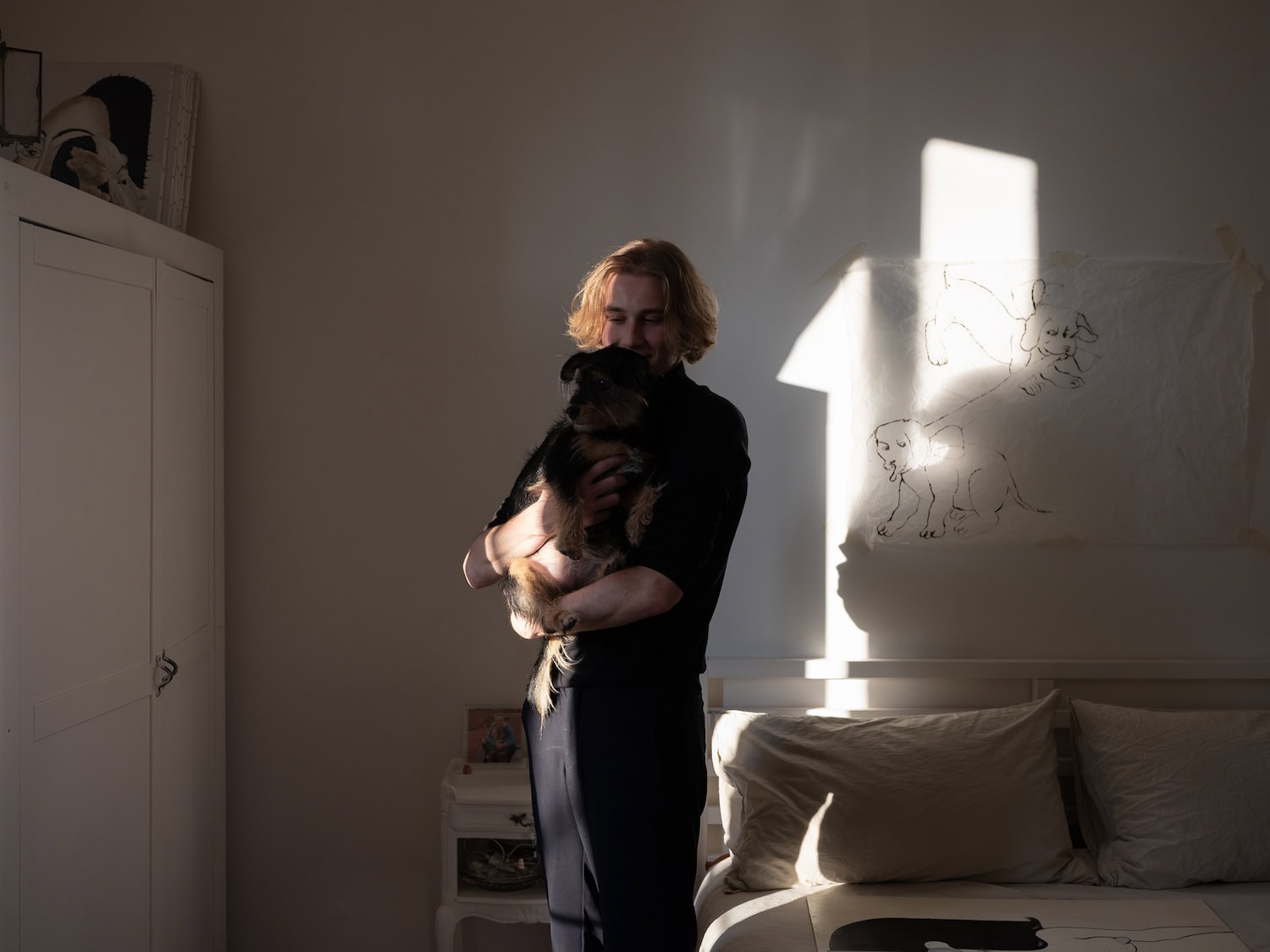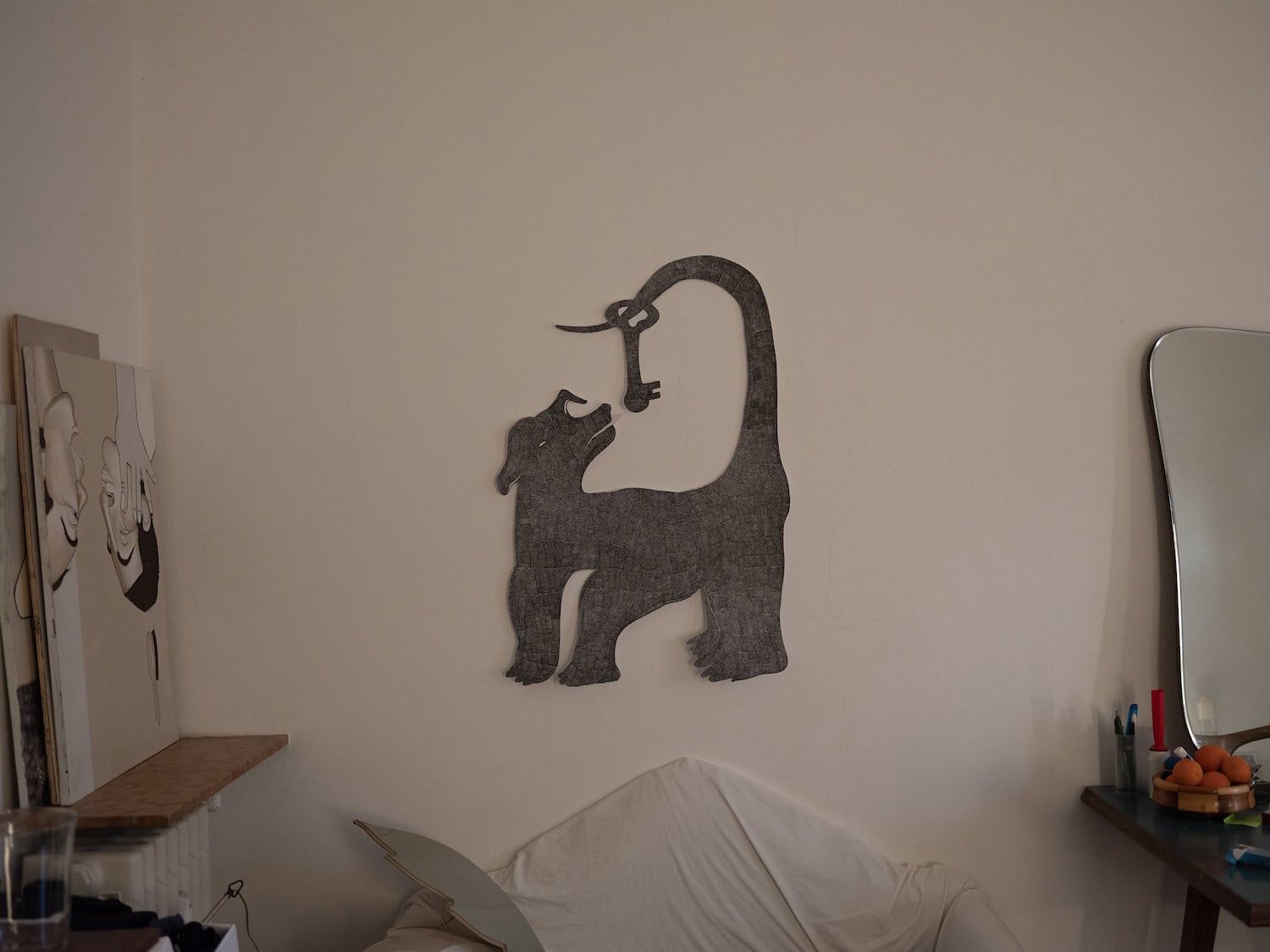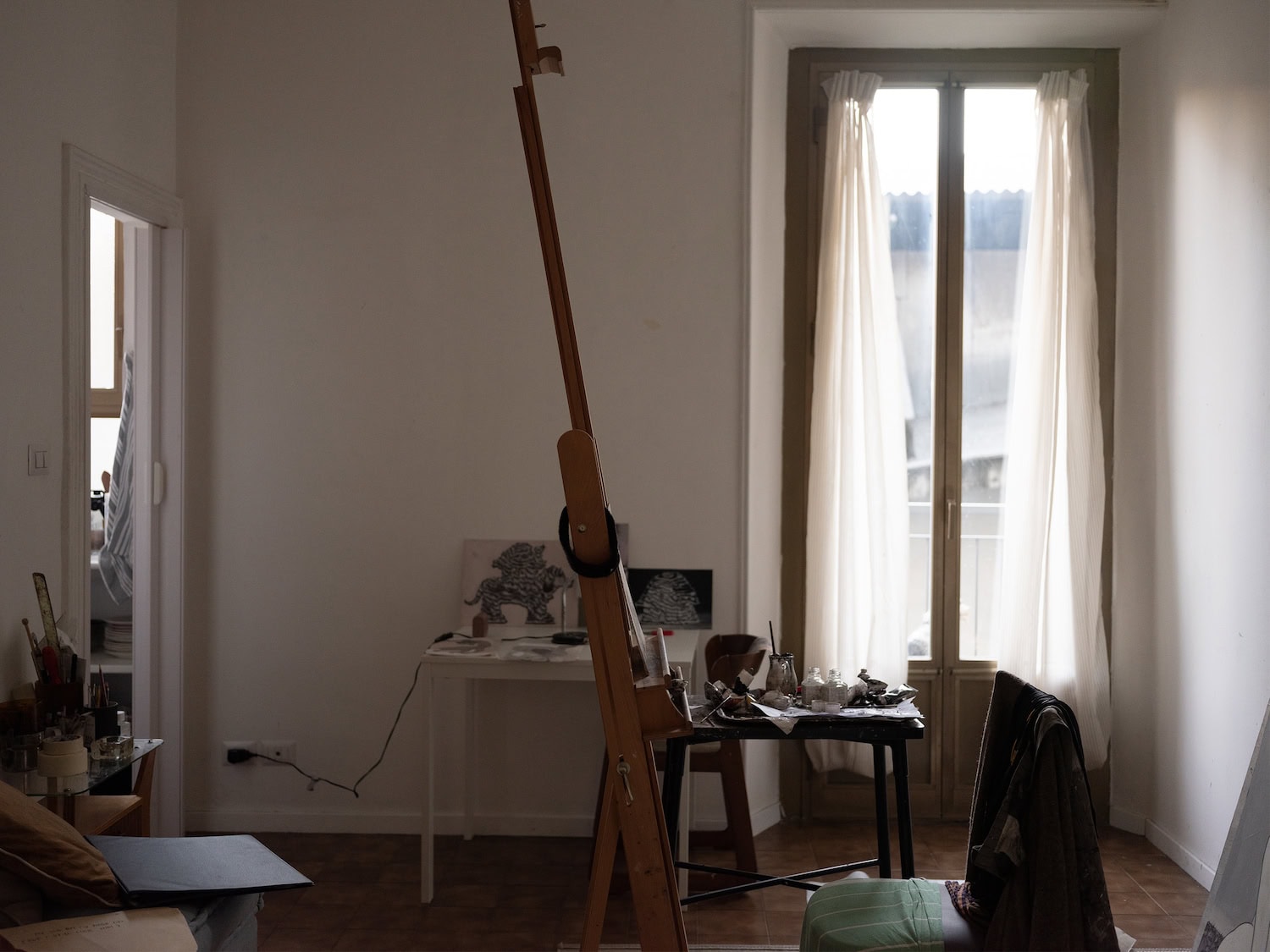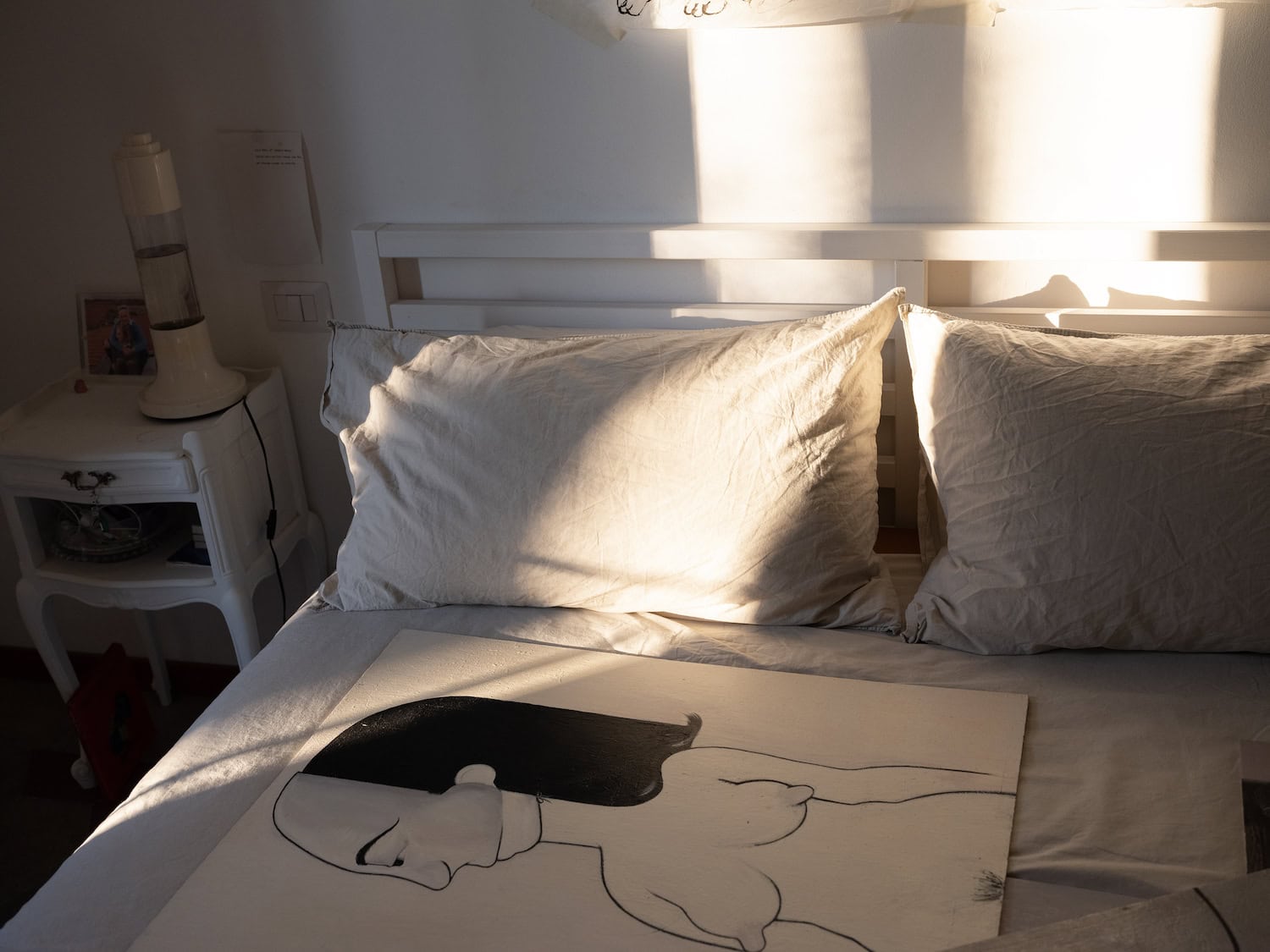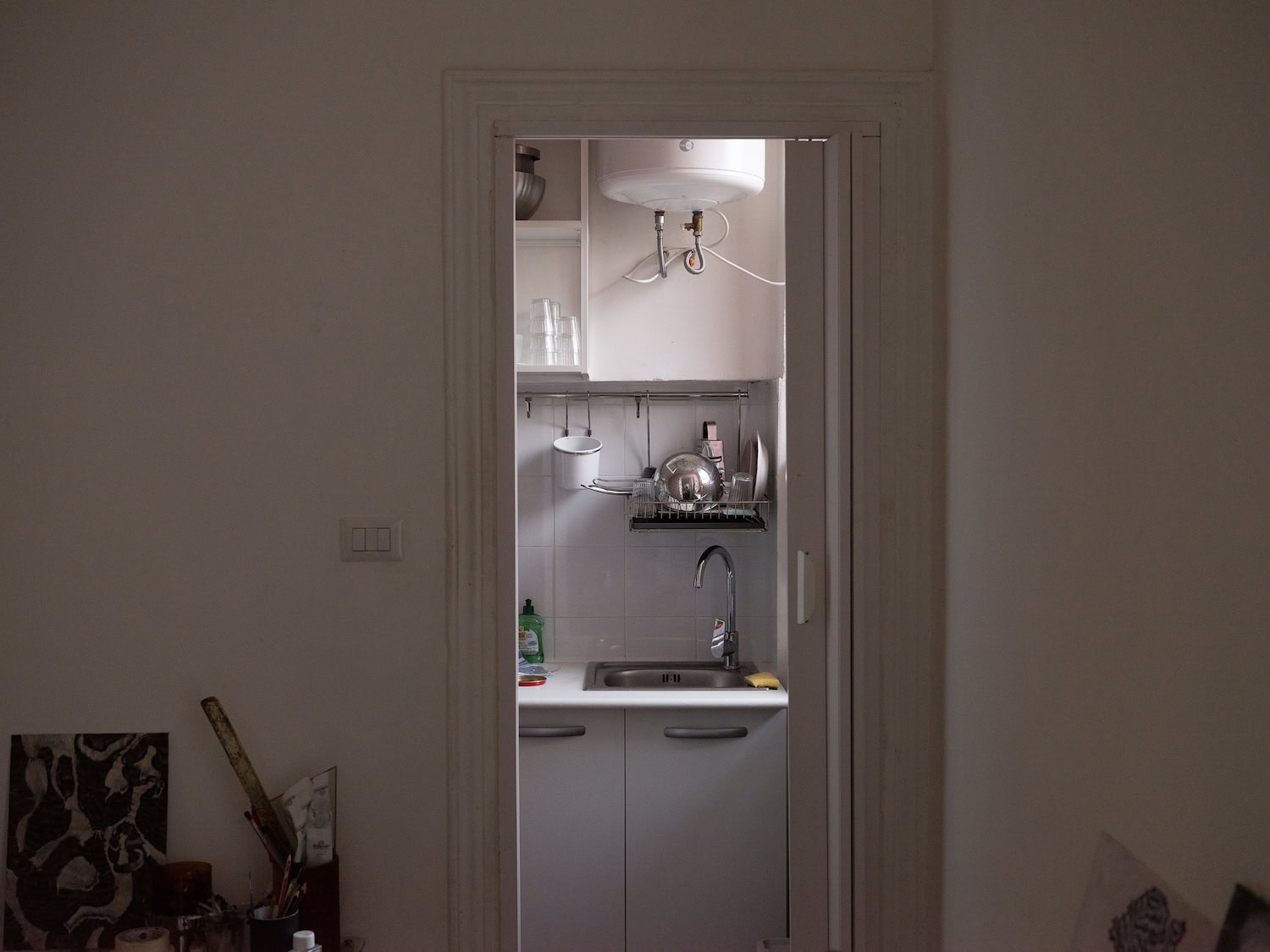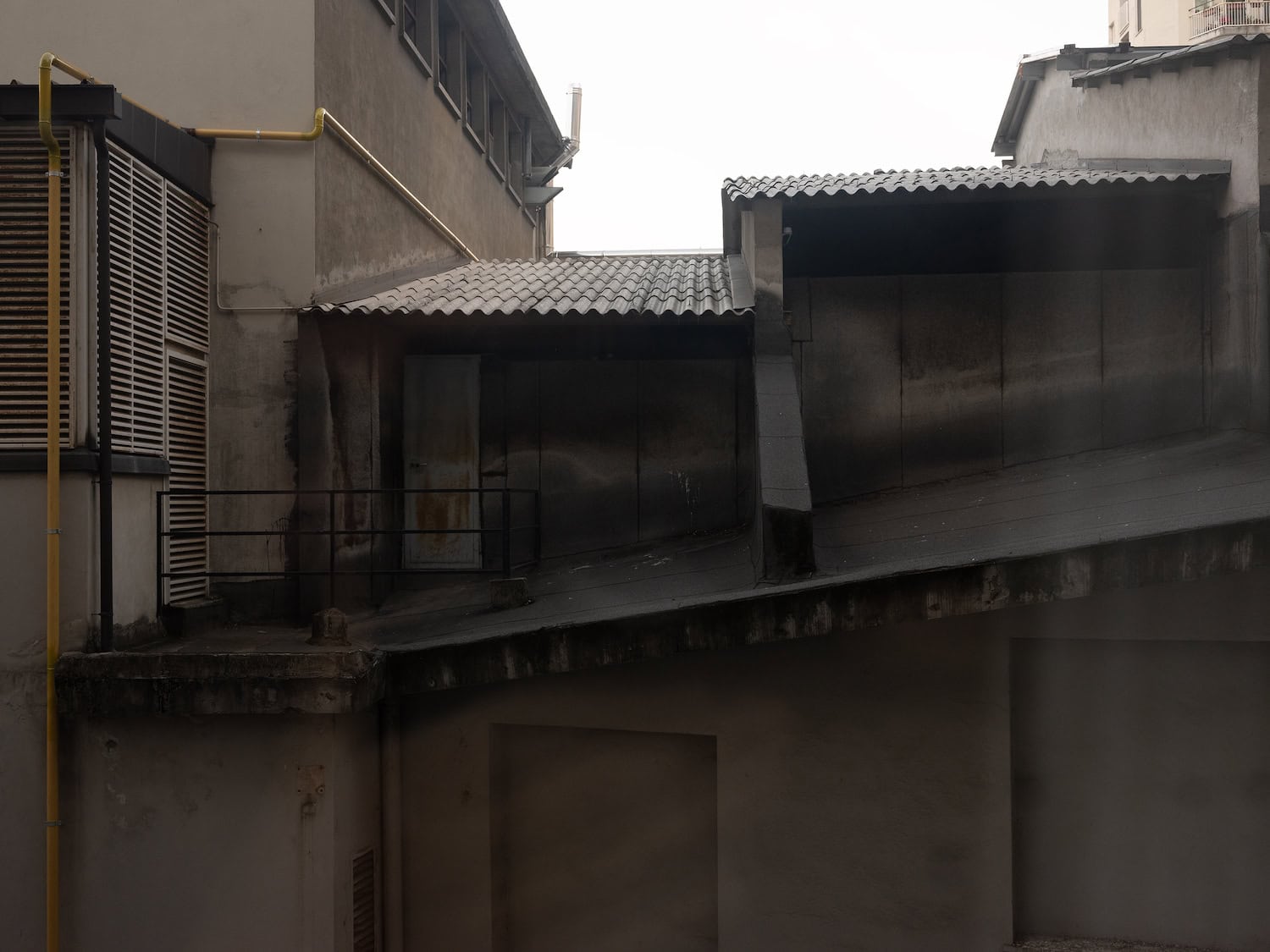Time, in any story, plays a fundamental role. At what point does Sébastien Nôtre live in the present? A year ago, the French painter came to this place in Milan, where we were hosted, to build his own living and painting environment. Typical or atypical, the beauty of the spaces he inhabits is undeniable—the spirit has spread far beyond living spaces, and even unfairly difficult days can still be perceived by the artist as an opportunity to start new creative processes. Let’s listen to this classic conversation, this coffee-sharing, this moment of confidence with Sebastien Notre in his own studio space.
Mia Olive Bindner: Since the moment you moved into this studio, it has probably evolved. Could you tell us how you redesigned it? Did the input light play a role in the definition of the space and also in your lifestyle?
Sébastien Nôtre: For me, it is not just the studio, it’s the apartment, or even it’s a whole. At the beginning, it was completely empty, there was not even a kitchen. It was one thing after another, the bed, the chair and more. The painting place was always there because of the light. During the morning time, it is completely dark in this room. The neighbours do not have the other side and they call their apartment “the cave”. Afterwards, when it is summer, you can not stay there anymore because it is too hot. It doesn’t influence me directly on my work because my research comes from somewhere else, but it helps me because I use light and pastel colours. It is not even an artificial light that would deceive the colours. The studio I had before was a garage with a huge neon light above the paint. I used to do something, and when I took the paints out of the garage, I saw something else. Now, I work without artificial light as much as possible. When it is too dark, I do not turn on the light, I stop painting.
MOB: The light allows you to stay closer to the truth regarding the colours. In the morning, you paint there, but during the evening, you spend time elsewhere. As a result, you are on movement. Do you have certain spaces dedicated to certain times of your day?
SN: The painting is only in this room adjoining the kitchen. Where we are, I do not create anything. There is just the desk where I always have paper and a pencil because I often draw. But it is a different approach, much more relaxed. Even if I keep one of a hundred drawings to rework it as a painting in the other room. For me, all the rooms are linked. In fact, having a bed next to the place where I work gives rise to particular moments—I eat in front of the painting, I take a nap, or I have breaks. At the same time, it is separating rooms, so it can also be just painting and nothing else.
MOB: Is it an environment that has an influence on your work? You talk about the way you made the studio evolve. From another perspective, do you feel that it makes you evolve?
SN: I realize that feeling good is important for painting. I need to feel good, and for that, I need to have clean and dedicated spaces. I started painting in 9 square meters. I ate at the same table where I prepared the colours and this had an influence on my work. Most of the time, I completely separate living space and working space, but now I have to reconsider that. I am painting a large format so I put all the other paintings in the living space. I always interact with the space, I move things around, and the paintings move around too. Everything moves all the time. Now you are asking me the question, it frustrates me because I know it does not completely represent me, but I hope it will be. I almost try to create an environment that is a work of art too. It is a way to create things that are not the painting. I realize that choosing a lamp is just as important as making choices in painting.
MOB: When you talk about it being a place in the city that is surrounded by life. Can you tell us something about the people who live around you?
SN: I have neighbours who spend all day yelling at each other. That is also why I decided to paint in the other room, because you can hear everything here. Their apartment doesn’t go on the other side of mine. Sometimes I laugh about it. I hear the insults they say to each other for hours. At least, when you accumulate these things it becomes anxiety-provoking. Underneath, there are insurance companies, so I see serious people in suits—it calms me down. In fact, I need security in everything. That is why I work a lot on the bourgeoisie. I have a lot to say about their secrecy and hypocrisy. While I criticize them, it makes me envious because it represents security for me. Just to go down and see Milanese dames, to look at them having their coffee and having spent two hours getting dressed, it calms me down.
MOB: You mentioned looking at the antique vitrines when you were walking your dog. Your space looks like one of those you described—there is a selection of furniture and colours. In the end, these are static things. How does Pantoufle bring the life that seems essential to this space?
SN: I knew that it would change everything to have a dog, that there would be something moving in my space, and for me it is really important not to lock myself in. The dog allows you to get out of yourself. Her dedicated space is this one, even if she has many other places. She knows what paint is, she doesn’t step on it. Pantoufle is everywhere, and I do not have to lock myself anymore. The problem is that we are always asked about “what you really want to say?” or “what you really have inside you?”. Then, you have to keep a link with simple things—dogs are simple.
MOB: Do you ever feel like pushing the walls or getting out of your own space?
SN: It is my space, but it is still my space in the city, and sometimes it is oppressive. I also chose this place because I like to observe the people downstairs from a distance. I am at the window every day. Now, I am doing the biggest painting I have ever done. I made the canvas custom to fit the wall, but when it came into the studio I thought it was huge. Now that I have started, I am thinking of doing even bigger than that. So pushing the walls in that sense means a lot to me. I would like to have a bigger creative space. What is problematic is to have a balance between the economic and practical issues. I’ve already thought about the problem that you can not take pictures of the finished painting in this space—there is not enough space. Therefore, It is necessary to take it out, but how to take it out? Where do I store it?
MOB: I wonder if the constraints induced by your space might be a potential source of creativity. Can you tell us about your current project and the influence of your environment on it?
SN: I hope I am doing something different and that it is a different approach too. I realized that I did not want to do small paintings anymore. What I like is to tell stories, and on small canvases, it is even more difficult. For me, the past is essential because I like the idea of making a new chapter. The technique that I use is different because I usually launch into a kind of improvisation. Most of the time, I make characters, and I realize that the feet do not fit in the painting, so I have to start all over again. For this project, I spent three weeks thinking about how I wanted to compose the format. I did something I had never done before. I made a collage visualisation which allowed me to do something precise and I projected it on the canvas. You see, when we talked about space, it was also limited. In the end, the constraint led me not to copy the drawing that I had done in a boring way. Fortunately, there was this part of improvisation.
